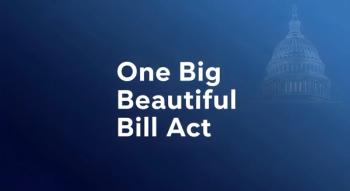
Study: Financial Incentives Did Not Improve Cholesterol Levels in Those Taking Statins
Investigators found only small differences in the change in LDL-C levels in the incentive groups versus the control group
Financial incentives either for adherence to statin medication or for lowered cholesterol levels doesn’t appear to be enough to motivate patients to keep their cholesterol levels in check, according to the findings of a recent
In this randomized clinical trial, 764 participants with elevated cardiovascular disease risk, suboptimal cholesterol levels, and imperfect statin adherence received financial incentives for 12 months. Investigators offered participants up to $325 for completing study milestones, including five visits for measurement of low-density lipoprotein cholesterol (LDL-C) level measurement. A control group received no intervention.
Over a 12-month period, patients receiving the incentives were randomized to three groups: incentives based on their daily statin adherence (what investigators called the “process group”), LDL-C value every three months (the “outcomes group”), or both (process plus outcomes group). A fully adherent participant in a financial incentives group could earn, on average, $1.40 per day.
Participants in the outcomes groups received $126 each time their LDL-C level had decreased at least 10 mg/dL in the three months since the last visit. During the study year, these payments were equivalent to the expected value of the process group. A participant who achieved an LDL-C level reduction of 20 mg/dL or more during one quarter and maintained that reduction the next quarter would receive the outcome incentive at the end of both quarters.
The two intervention groups with incentives for daily statin adherence (process and process plus outcomes) had higher rates of adherence measured with smart pill bottles. Measured adherence across 12 months was 70% in both the control and outcomes groups compared with 83% in the process group and 80% in the process plus outcomes group.
But there were only small differences in the change in LDL-C levels in the incentive groups versus the control group. Investigators found that mean change in LDL-C levels in the intervention groups at 18 months (six months after financial incentives ended) differed from the control group by less than 5 mg/dL.
Investigators had designed the study to detect a 10 mg/dL difference to be a clinically meaningful reduction in atherosclerotic cardiovascular disease-related events.
“Financial incentives may help patients focus on the importance of statins and LDL-C levels, but clearly, incentives were insufficient in this trial and the results raise the question whether present bias is the key barrier to the formation of healthy habits,” the investigators wrote. “Patients may also need support for diverse personal barriers that they may face, such as challenging living conditions. Future studies might combine incentives with interventions, such as motivational interviewing, for patients who feel that bad health is inevitable or who struggle to change their routines.”
Newsletter
Get the latest industry news, event updates, and more from Managed healthcare Executive.





















































